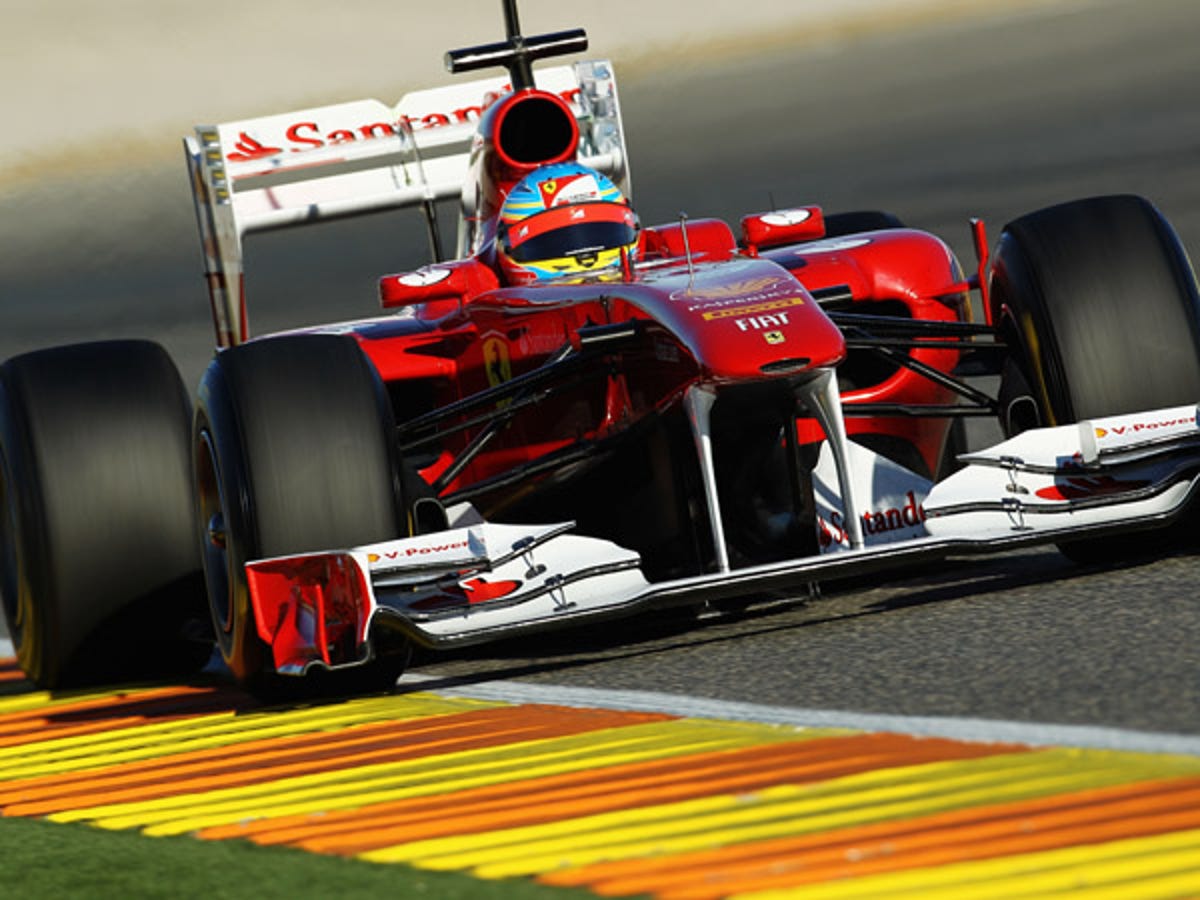Behind the scenes: Ferrari F1 garage
Behind the headline names of the Ferrari F1 team there's a small army of people, including Shell's fuel and lubricant chemists, that make the team tick.

Ferrari 150° Italia
Behind the headline names of the Ferrari F1 team there's a small army of people, including Shell's fuel and lubricant chemists, that make the team tick.
For this year's Formula One World Championship, Ferrari is fielding its 150° Italia race car. In line with this year's rules, the car features a 2.4-litre V8 engine, an adjustable rear wing that it's hoped will improve the likelihood of on-track overtaking and new Pirelli tyres; minimum body weight is pegged at 640kg.
A kinetic energy recovery system (KERS) is fitted that captures otherwise wasted braking energy in an on-board battery pack. A short burst of this energy can then be unleashed via a steering wheel button.
People everywhere
When parked on the sofa watching a Formula One race, it's all too easy to focus on the individual aspects of the sport — Vettel versus Webber, Hamilton versus Button, Alonso versus everyone else. When milling around an F1 pit lane garage, as CNET Australia was on the practice day for the Australian Formula One Grand Prix, it's clear that a lot more people are involved in something approaching ordered chaos.
Let me fix this
Beyond the people you see working in the garage, there's a whole army of engineers beavering away over laptops in rooms out the back, as well as in Ferrari's headquarters, unseen and unphotographed.
Look at those numbers
By all accounts, Ferrari F1's team has the largest budget. What's undisputed is the team heritage; Ferrari is the only team to have competed in every Formula One World Championship season since it began in 1950.
The current drivers for Ferrari are Felippe Massa and Fernando Alonso (pictured); the latter allegedly earns €25 million per year.
Fill 'er up!
According to Shell, the V-Power fuel used by the F1 team is similar to the formulation sold in service stations. In a previous publicity event, a Ferrari F1 race car ran successfully on store bought fuel, although the engine's kilowatt count was naturally down. For a race weekend, around 2000 litres of fuel is flown or shipped from a refinery in northern England.
Brothers in arms
Because of their 60 year collaboration, the two companies are especially close. According to Shell, they are the only fuel partner to have a dedicated lab facility in their racing team's F1 garage.
Mobile lab
Cara Tredget (above), Shell's technology manager for Ferrari, poses in the mobile lab that travels with the F1 team. Compared to our visit in 2009, the lab has been given a facelift, the most noticeable component being the promotional banners along the walls and extra splashes of laboratory-white paint.
Space constraints
Yes, the lab is as cramped as it looks, although swingable touchscreen monitors and thin Apple wireless keyboards help.
Peak performance
At any time during a race weekend F1's ruling body, the FIA, can sample fuel from a team's supply drums, preparation rigs or the cars themselves and test it against the pre-approved reference fuel. The team at the Shell lab perform the same sort of tests about 30 times during a racing weekend with a gas chromatography instrument that displays individual components in the fuel as peaks on a graph.
Grinding away
The rules governing car lubricants aren't as strict as the fuel regulations. This allows engineers and chemists to try new components and formulations, but it also means that the testing procedure is different, too. Samples of used lubricant are put through a rotating disc electrode analyser that can detect minute engine fragments.
Higher than expected concentrations of certain metals may be a sign of excessive wear and tear with a particular part of the engine, an important consideration seeing as teams are limited to just eight engines per driver over the course of the 19-race season, with engines expected to last about 2500km.
Frequent flyer points
For every race weekend, Shell has three staff members manning the lab, with one dedicated to fuel analysis and one to lubricant analysis.
And elsewhere...
In addition to the trackside lab, Shell has F1 facilities in the UK, Germany and Ferrari's headquarters in Maranello, Italy.
Derek Fung attended the Australian Formula One Grand Prix as a guest of Shell.

